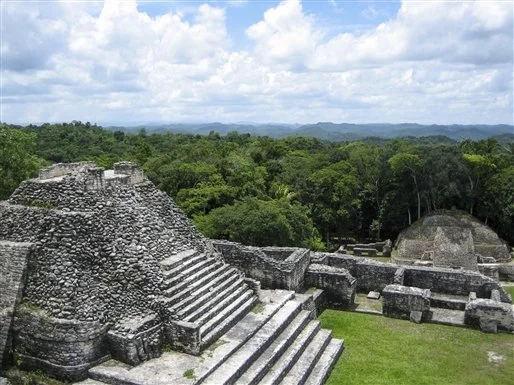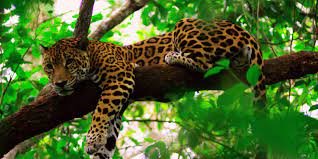Unforgettable Adventures Await in the Rainforest
A truly memorable vacation awaits in the Rainforest of West-central Belize. This area attracts visitors seeking natural beauty, adventure, history, seclusion and culture. Eco-tourism and adventure tourism have grown the appeal as a premier tropical getaway destination, though still developing compared to beach tourism in places like Ambergris Caye, Caye Caulker or San Pedro. The combination of natural scenery, activities, history and lodging surround tourists in a secluded jungle environment unlike most other places. The rainforests of Belize are a popular tourist destination for several reasons:
• Abundant natural beauty. Belizean rainforests feature lush tropical vegetation, waterfalls, rivers, jungle trails and wildlife in a scenic natural environment. Adventure and eco-tourism are draws, allowing visitors to experience stunning scenery and biodiversity.
• Unique ecosystems. Belize has one of the largest remaining expanses of Caribbean rainforest, hosting habitats like mangroves, wetlands, coral reefs and barrier islands. This results in high biodiversity, including many endangered species. Tourism helps fund conservation efforts.
• Opportunities for adventure. Activities include jungle lodging, hiking, cave tubing, zip lining, mountain biking, kayaking and river tubing. Adventure tourism, especially eco-tourism, is a major appeal. The remote rainforests offer a true tropical getaway experience.
• Maya history. Ancient Maya ruins, artifacts and petroglyphs can be explored in the Belizean rainforest. This provides a window into the history, culture, architecture and achievements of the Maya civilization. Archeological tours are popular, especially around major sites like Caracol or Altun Ha.
• Secluded lodges. Luxury jungle lodges offer an exclusive escape surrounded by nature. They provide amenities with a rustic, eco-luxe vibe as a contrast to beach resorts. Seclusion amidst scenic rainforest scenery is a premier experience, though lodges are still developing compared to beaches.
• Challenging environment. The dense, humid rainforest environment presents challenges for access, accommodation and transportation that contribute to its appeal as a rugged adventure destination. Navigating terrain and obstacles adds to the thrill of an authentic jungle experience. Limited development fosters a wild, untouched feel.
• Unique culture. Rural Garifuna and Maya communities live in the Belizean rainforest, continuing ancient cultural traditions of language, religion, food, music, arts and ceremonies despite limited access to resources. Glimpses into this unique culture are a draw for those interested in cultural immersion and indigenous experiences.
• Ecosystems: Belize has one of the largest remaining expanses of Caribbean rainforest, including tropical moist broadleaf forest and pine savanna. This hosts incredible biodiversity like howler monkeys, jaguars, tapirs, ocelots, scarlet macaws, manatees, and whale sharks. Over 1/3 of Belize is protected habitat, though threats remain. Tourism supports conservation.
• Adventure activities: Hiking jungle trails, cave tubing, zip lining, mountain biking, kayaking rivers, swimming in secluded waterfalls and cenotes. Multi-day treks on rugged trails are popular, allowing immersion in the rainforest environment. Safety is key for activities in remote areas. Guiding also provides cultural insights.
• Ancient Maya culture: Ruins at Caracol, Altun Ha, Xunantunich and others showcase architecture, astronomy, art, infrastructure and daily life of the Maya civilization. Petroglyphs and artifacts are still being discovered. Archeological tours provide knowledge and appreciation of this impressive pre-Columbian culture. Spanish colonists also left settlements and Catholic churches in the region.
• Eco-lodges: Secluded lodges offer a luxurious rainforest getaway with amenities like spas, restaurants, hiking guides and more. Options range from basic cabins to overwater bungalows and jungle villas. Staying surrounded by nature provides opportunities for wildlife viewing, especially at dawn and dusk. However, lodges remain smaller-scale than beach resort areas.
• Challenges and obstacles: The dense rainforest environment presents difficulties accessing locations, constructing accommodations and trails, transporting heavy equipment, and navigating terrain. This contributes to the rugged, untamed feel and sense of adventure. 4-wheel drive vehicles, horses, and helis are sometimes needed to reach lodges. Limited development prevents mass tourism, maintaining seclusion.
• Dependent communities: Rural villages of Garifuna, Mestizo and Maya people inhabit the rainforest, with limited access to resources, infrastructure and opportunities. However, they continue cultural traditions passed down through generations. Tours often visit communities, supporting local economies and connecting visitors to residents in an authentic way. Poverty and lack of information on rights and resources remain issues despite tourism.
• Seasons: The rainy season is from May to November, with heavy rainfall and flooding, while the dry season spans December to April. The rainy season sees less tourists but lower prices. The dry season, especially February to April, is high season for tourism, hiking and activities, though very hot and humid. The transition seasons of April-May and October-November can also be pleasant, with smaller crowds and lower costs.




